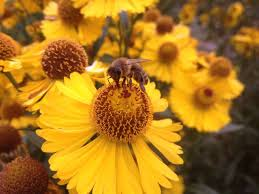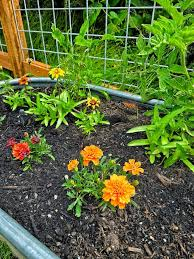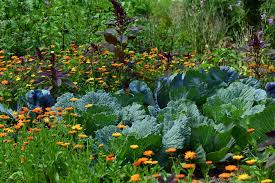Flowers are more than just beautiful additions to your garden—they play a crucial role in supporting the health of your vegetables. By carefully selecting and planting flowers among your crops, you can attract beneficial insects, deter harmful pests, enhance pollination, and even improve soil quality. Here’s how you can use flower power to boost your vegetable garden.
Attract Beneficial Insects
Instead of occupying valuable space, flowers around your vegetable garden help attract predators that naturally control pests. Flowers like calendula and cosmos lure in insects such as parasitic wasps and hoverflies, which prey on pests like aphids. With these beneficial insects in place, your vegetables become much less vulnerable to unwanted visitors.
Confuse and Repel Pests with Companion Planting
A flower-filled garden creates a diverse tapestry of colors, scents, and textures that confuse many pests, making it difficult for them to target your crops. For example, by planting flowers alongside carrots, you can help mask the scent of the plants and prevent pests like carrot flies from homing in.
Flowers like nasturtiums are excellent at drawing aphids away from vegetables, keeping your plants safe. Marigolds, on the other hand, go a step further by actively repelling pests like whiteflies, which often target tomatoes. These flowers attract beneficial insects while keeping harmful pests at bay.

Smother Weeds with Flowering Green Manures
Flowering green manures like phacelia and buckwheat provide more than beauty—they help suppress weeds. These flowers grow quickly and cover the ground, blocking sunlight and preventing weed growth. Additionally, the deep roots of some green manures improve soil structure, while legumes like clover fix nitrogen, enriching the soil for future plantings.
Perennial Flowers: A Long-Term Investment
Perennial flowers that return year after year are a fantastic addition to the vegetable garden. They attract essential pollinators like bees, butterflies, and moths, and they help manage pests. For example, daisies like helenium, plants from the carrot family such as astrantia, and tall flowers like hollyhocks bring both beauty and practicality to your garden. Many herbs, including oregano and fennel, also produce flowers that attract ladybugs, whose larvae feed on pests like aphids.

Annual and Biennial Flowers: Quick and Effective
Annuals and biennials complete their life cycle in one or two years and offer quick results in the garden. Flowers such as poppies, foxgloves, and cornflowers are not only stunning, but they also self-seed, meaning they’ll return year after year with minimal effort. Sowing hardy annuals in the autumn is a great way to prepare for the growing season. Scatter the seeds across well-prepared soil or in less productive areas like garden paths for a natural, effortless look.
Plan Your Flower Garden
Planning flowers into your vegetable garden from the start can make all the difference. Our Garden Planner tool helps you choose the right flowers for your crops, offering detailed suggestions on companion plants and how to care for them. This ensures your vegetable garden flourishes while attracting the beneficial insects that help it thrive.

Final Thoughts
Flowers are more than just a visual delight in the vegetable garden—they provide essential support for pest control, pollination, and soil health. Whether you’re growing perennials, annuals, or biennials, incorporating flowers into your garden is a simple and effective way to enhance its overall productivity. Which flowers do you grow alongside your vegetables? We’d love to hear about the plants that attract beneficial insects in your garden. Share your tips and recommendations with us in the comments below!
